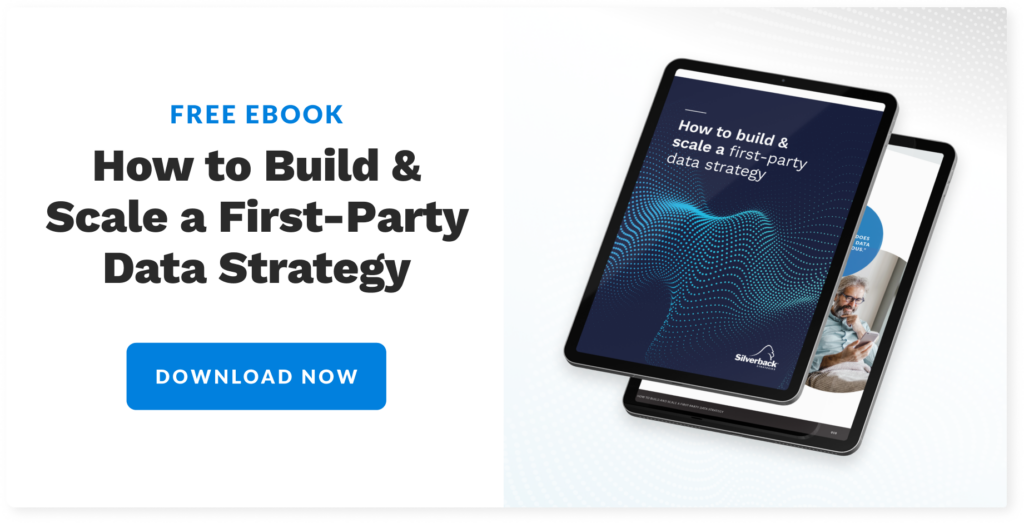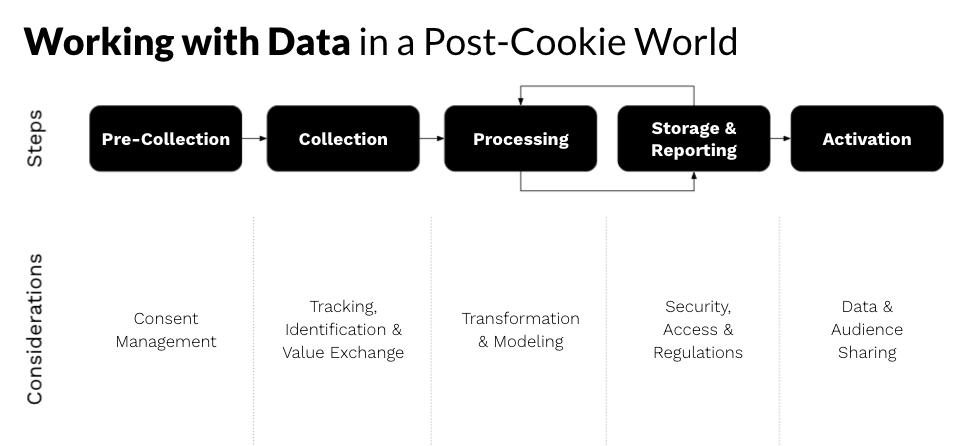
People now realize third parties are collecting, brokering, and using their personal data without consent. With this revelation, the digital marketing space is facing a reckoning. How can marketers and advertisers still get the data they need to reach the people who might purchase their goods and services without needing to use the practices considered so distrusted and unsavory by the public? By using value exchange in marketing.
The government is reacting first. Data privacy legislation aiming to end undercover tracking is here and more is on the way. The internet’s closely following the path, coming up with new ways to provide insight and data to paying advertisers and marketers.
Marketers can’t just wait around. Instead, it’s critical you develop a first-party data strategy to entice prospects to hand over their information willingly. This isn’t as hard as it sounds.
Before, marketers could get by without holding up their end of the bargain. Valuable data flowed into your ecosystem and ads of debatable value were displayed in return. True value exchange in marketing is now the name of the game. Are you ready to provide content your audience will feel compelled to provide their information to receive?
Why is first-party data better than third-party?
Third-party data, even anonymized, has a large and important role in digital marketing. Tracking pixels, or “cookies,” collect this data as a user browses the web.
However, first-party data provides you with a unique head start on creating a relationship, because this data comes directly from the individual. They’ve chosen to share their personal information with you via a form, a purchase, or another direct method.
People volunteering their information for something from you in exchange is the start of a relationship. They’ve expressed interest and you’ve expressed interest by simply creating work they’d enjoy. Starting with a one-to-one knowledge transaction helps you identify interests and additional details you might no longer get from less-precise targeting. You’ll also be more confident this data is clean and correct!
Beyond the sales benefit of engaged prospects, first-party data could be safer, legally, as new privacy laws are introduced at the state level. With new data privacy legislation popping up in major areas in America and around the world, you want to be sure you’ve got as much consent as possible.
Proving informed consent from third-party data could be tricky. First-party data is much easier to prove, since you have all the direct opt-in documentation.

How do I get more first-party data?
Value. Provide value upon more value; structure your content strategy around value exchange in marketing. When you’re asking people to volunteer their contact information, there needs to be a good reason for it. Flimsy content or stingy discounts in exchange for an email address might work in the short-term…but don’t be surprised when they unsubscribe or mark you as spam as soon as you try to connect again.
This is where data analytics comes into play. Using the third-party information you get about anonymized groups with similar interests, you can start to evaluate which pieces of your content resonate most with the audience you want to reach. However, ad platforms have already started stripping away audience insights marketers were used to using.
You can also look back at your past data from any source to glean insights into assets traditionally successful for your business at large. Maybe webinars get lots of registrations while podcasts only get a handful of listens. For another business, blog posts could be their bread-and-butter to drive leads while another finds blogs only good for keyword performance.
Do the digging to understand what your strengths and weaknesses are, figure out what content is performing well for specific audiences, and meld them together to create a robust, multi-faceted value proposition. Though it might not be an expansive process, audience research like this can be simple and eye-opening.
Once you start using this strategy, you can build more complete profiles of the people who’ve shared their information, and then you’ll have a robust database of multifaceted prospects.
Unfortunately, without granular information about what ads are being shown to which individuals, you’ll need to assume at a certain point, your ad’s lifespan is over.
Be prepared to generate more creative than ever and accelerate your creative refresh rate, meaning the frequency at which an ad campaign needs new creative iterations. New graphics, new copy, new platforms to use…everything will need to move faster to ensure anonymized groups are seeing variety rather than the same ad over and over again.
Value exchange in marketing: what should you ask for?
What data do you need? You only want to collect the least amount of information necessary for you to create a successful campaign.
For most companies, you need the basics; name and email address. You can also consider trying to get more information about their own business, like vertical or business size, or even their title.
Don’t forget you’ll need consent. If you’re asking for too much, users might feel uncomfortable and choose not to opt-in. You shouldn’t pre-check an opt-in box for them, because some legislation (like the European Union’s GDPR) prohibits this behavior. You’ll need to require the consumer to actively grant consent.
Again, this is where value plays a big role. The more value you’re offering, the more value consumers could be willing to give you. If you want to ask for a mailing address, make sure what you intend to send them is amazing so they have no hesitation to provide their info. Keep value in the forefront of your mind as you think about how much you’re asking for from your audience.
What can I do with data from the value exchange in marketing?
Remember, the less information you keep, the lower your risk of a data breach or compromise. You will face a world of trouble if you expose personal identifying information. Consult with experts on the best methods of data handling.
You should only do with the data what you’ve told people you’ll do with the data. Asking visitors to opt in to email communications but requiring a phone number and mailing address is a misalignment. Make sure to disclose how you’ll use this information if those elements are critical to your strategy. When you discuss data handling and compliance with an expert advisor, bring your full marketing communications strategy to the table.
Once you have good-faith data, you can use it to provide a multitude of opportunities both for you and for your prospects.

Continue to provide a value exchange in marketing at every step of their customer journey. This is a good time to think about audience segmentation. For example, you could create vertical-specific email nurtures to send to groups of similar people. Create assets to fit trends and popularity of other pieces and provide them based on the more specific information you have on each individual.
Read More: A Full Funnel Marketing Strategy for Lead Generation
Align your content and marketing strategy based on previous performance and let third-party data help color the overall picture of your audience’s behavior. While it can’t give you the depth of information first-party data can, it can illuminate what’s working and what isn’t on a larger scale.
Perhaps you’ll notice your webinar registrations are lower than ebook downloads, or maybe one topic consistently does better than the rest in terms of site traffic. Take those cues to develop content your target audience will provide their info to access. Not taking the time to absorb this data and adapting your strategy accordingly is a missed opportunity.
The more you do this, the better your data profiles become. The better they are, the more you can provide in value as you walk them towards the ultimate value: your product or service in exchange for their dollars.
Conclusion
The deprecation of cookies is not at all a death knell for digital marketing and advertising. In fact, it pushes businesses to get more creative in the value they’re providing potential customers. It allows companies to have full control over the kinds of data they collect and builds trust with your audience from the very beginning.
Treat this as an opportunity to take your sales future into your own hands. Consumers have more control over their own digital identity and now, it’s our job to give them reasons to give us insight into who they are.
Recent Posts
Creative Strategy in Digital Advertising
Read the ArticleYour CRM Attribution Is Unreliable — Here’s How to Improve Marketing Measurement
Read the ArticleEthical Considerations of AI In Marketing: Balancing Innovation with Responsibility
Read the Article
Unlock Your Growth Potential
Silverback helps businesses catapult web traffic, leads, and sales. We combine analytical and creative expertise to drive inbound marketing campaigns and track it all to find insights on what worked, what didn’t, and what we should try out next.
Contact Us